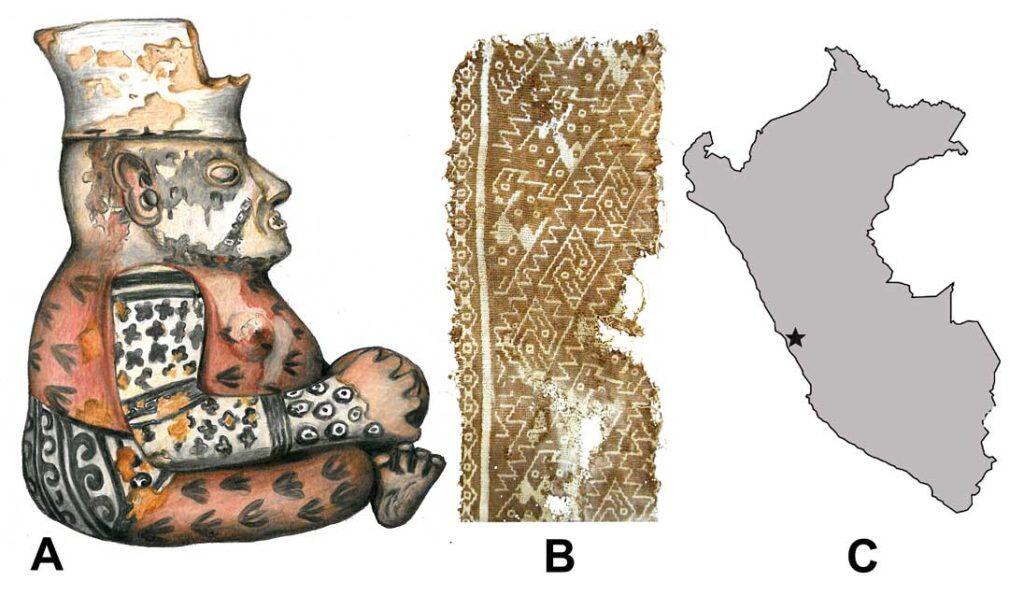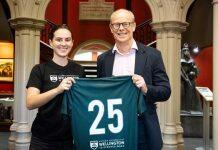

Image credit: Thomas G. Kaye, Judyta Bąk, Henry William Marcelo and Michael Pittman
A pioneering study led by Dr Michael Pittman, Assistant Professor at The Chinese University of Hong Kong (CUHK)’s School of Life Sciences and Thomas G. Kaye of the Foundation for Scientific Advancement in Sierra Vista, the United States, has uncovered intricate tattoo designs on 1,200-year-old mummified human remains from Peru’s Chancay culture using laser-stimulated fluorescence (LSF) technology. The Chancay, a pre-Hispanic civilisation, lived in what is now coastal Peru and they were known for their textiles and extensive trade with neighbouring regions. This breakthrough demonstrates the potential of advanced imaging techniques to rewrite history. The findings have been published in the Proceedings of the National Academy of Sciences (PNAS).
Ancient tattoos have long been enigmatic, with faded ink and post-mortem skin decay obscuring their original artistry. LSF technology, which generates high-contrast fluorescence images from preserved skin, has unveiled exceptional fine-line tattoos with details as narrow as 0.1-0.2 mm – far surpassing the resolution of even modern tattooing techniques. These ancient tattoos depict intricate geometric and zoomorphic designs that rival, and in some cases exceed, the artistic precision of Chancay pottery, textiles and rock art.
This discovery not only broadens archaeologists’ understanding of Chancay artistic expression but also suggests that tattoos could have been status symbols or spiritual emblems in ancient societies. The findings call for further exploration of ancient tattoo practices globally.
“This is just the tip of the iceberg,” Dr Pittman said. “LSF technology opens up a world of possibilities for studying ancient tattoos, not just in Peru but around the world. We hope that by introducing LSF technology to the practice of tattoo analysis we will further expand our knowledge of this important ancient artform.”
“LSF technology lets us see tattoos in their full glory, erasing centuries of degradation,” said first author Thomas G. Kaye. “The Chancay culture, known for its mass-produced textiles, also invested significant effort in personal body art. This could point to tattoos as a second major artistic focus, perhaps carrying deep cultural or spiritual significance.”
In addition to technical revelations, the study highlights the power of interdisciplinary research, showcasing archaeological expertise that deploys cutting-edge imaging to illuminate the finer points of Chancay culture. The international research team also included Judyta Bąk of Jagiellonian University in Kraków, Poland and Henry William Marcelo of José Faustino Sánchez Carrión National University in Huacho, Peru, where the tattoos were studied.
The full research paper can be found at: https://www.pnas.org/doi/10.1073/pnas.2421517122







































